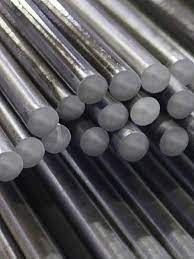5 Inconel Applications and Why You Should Use It

How Durable is Inconel?
Tensile strength, corrosion resistance, and even melt resistance can be measured when determining strength. Inconel 625 has a higher tensile strength range of 103 – 160 ksi than stainless steel (73.2 ksi) and can maintain that strength at higher operating temperatures.
Although exact measurements vary, reported statistics place the melting point of Inconel between 2,350°F and 2,460°F (1,290°C and 1,350°C). While the melting point of Inconel is lower than that of stainless steel, Inconel 625 is stronger at high temperatures and more resistant to oxidation and scaling.
Inconel is classified as a superalloy because it is resistant to corrosion and is well suited for extreme pressure and heat environments. Stainless steel alloys, on the other hand, are frequently more suitable for sterile manufacturing or medical applications. A superalloy, such as Inconel, is better suited for heat treating and other high-temperature processes.
What is the purpose of Inconel 625?
When it comes to nickel content, Inconel 625 falls between Inconel 330 and 600 in the high-nickel superalloy Inconel family. This combination, along with columbium and molybdenum, enables this type of Inconel to have a very high melting point and perform well in high heat. Inconel 625 is particularly resistant to chloride pitting and fatigue stress, and it has a high creep rupture strength and oxalic resistance. Furthermore, when compared to other Inconel variations, Inconel 625 is very easy to weld. The superalloy Inconel 625 can be used in a variety of applications due to its high chemical and temperature resistance, including jet engine exhausts, flare stacks, seawater equipment,
Five Inconel Application Examples
Extraction of Oil and Gas
Because of its high-temperature resistance and oxidation resistance, Inconel is ideal for use in the oil and gas extraction industries. The oil and gas industries require a superalloy metal, such as Inconel, that can withstand harsh environments and corrosive gases.
The superalloy Inconel 625 is particularly beneficial for natural gas processing systems. Because of its exceptional thermal fatigue strength and oxidation resistance, Inconel 625 is frequently used in the separation of extracted fluids or in-line steel transfer piping.
Heat Treat Applications
Inconel is well-known for its resistance to extreme temperatures and the ability to retain enough tensile strength at high temperatures to support moderate loads (Inconel 625 retains 13.3 KSI tensile strength at 2,000°F). This makes Inconel an excellent basket material for heat treatment applications, outperforming stainless steel alloys like Grade 304, 316, and 330 SS.
When holding parts through a rigorous heat treatment application, a basket made of a superalloy like Inconel will not lose shape as easily as most stainless steel alloys.
Rapid Temperature Changes
In some manufacturing processes, high and low-temperature processes are combined in rapid succession. Most Inconel alloys have excellent oxidation resistance at both high and low temperatures, allowing a single Inconel basket to be used in processes with temperatures ranging from near-cryogenic lows to heat treatment highs.
Saltwater Applications
Because of its exceptional resistance to sodium chloride (salt) at a wide range of temperatures, Inconel is frequently used in marine applications. As a result, Inconel can be ideal for a parts washing basket in processes that use salt or in factory locations near the ocean.
Some stainless steel alloys, on the other hand, have excellent saltwater resistance. So, when is Inconel considered superior?
In general, this superalloy would be far more useful than grade 316 stainless steel if extreme temperatures above 1,000°F were also a concern. At high temperatures, Inconel would retain its oxidation resistance better than 316 SS.
Jet Engines
Jet engines are unique in that they must frequently withstand extreme temperatures, both high and low. According to the meteorology training website, the average air temperature at 36,000 feet (well within a passenger jet’s standard cruising altitude) is -56.3°C (-69.3°F), but the combustion process can reach temperatures of 1,150°C (2120°F).
Cooling technologies are used to quickly reduce temperatures, but they can still easily exceed many metals’ tolerances. Despite rapid temperature changes caused by the combustion process and cooling technologies used in the aerospace industry, Inconel 600 retains high oxidation resistance and tensile strength.
